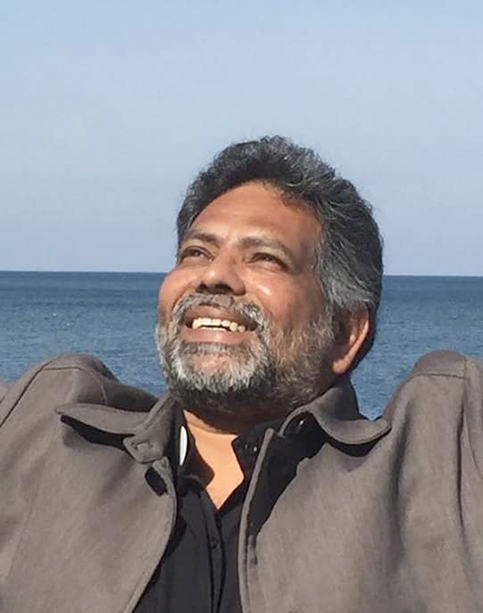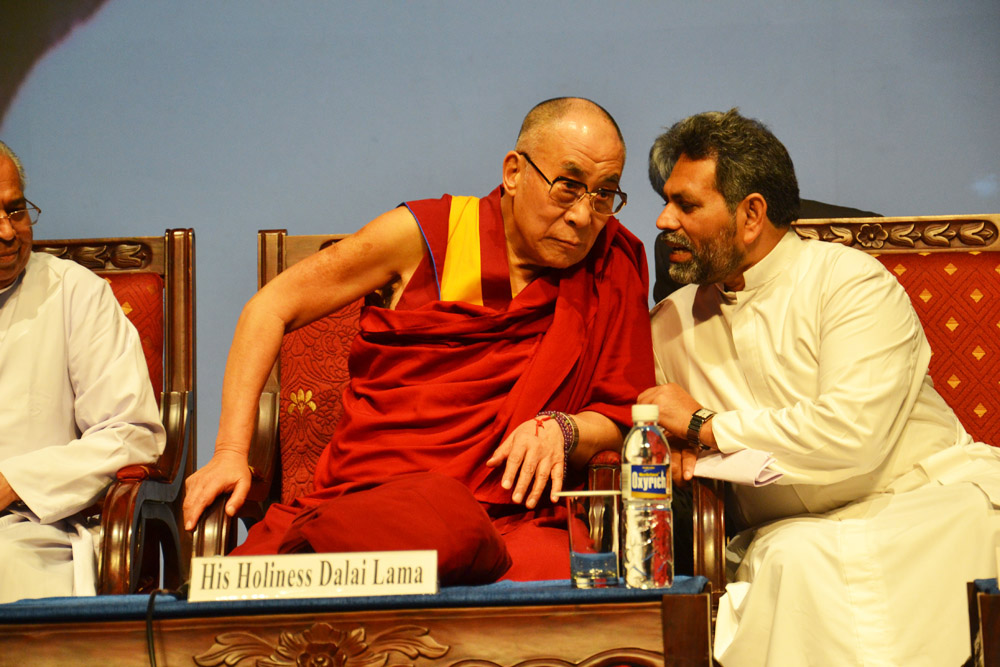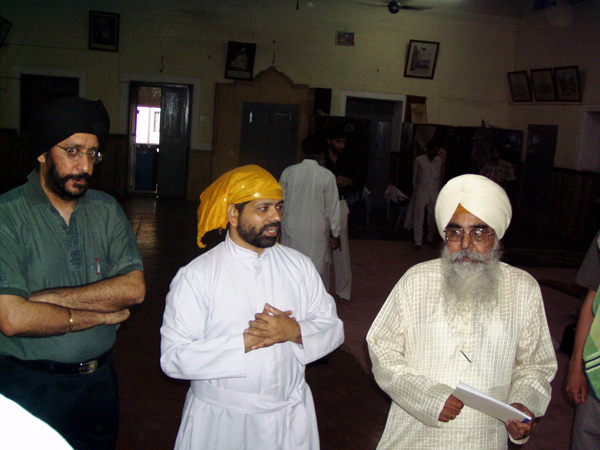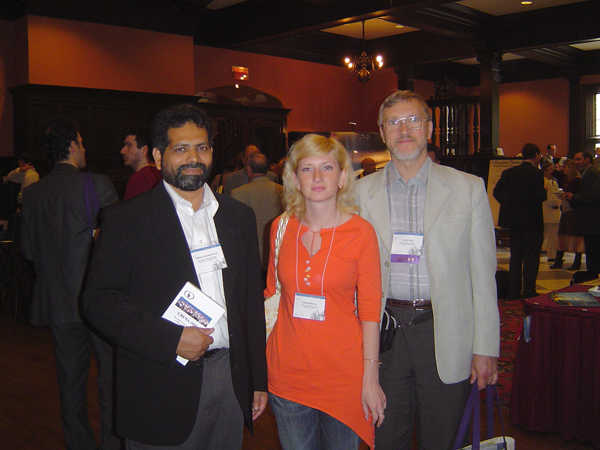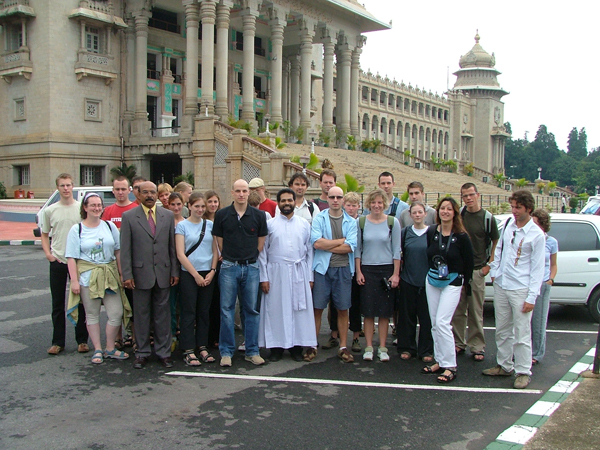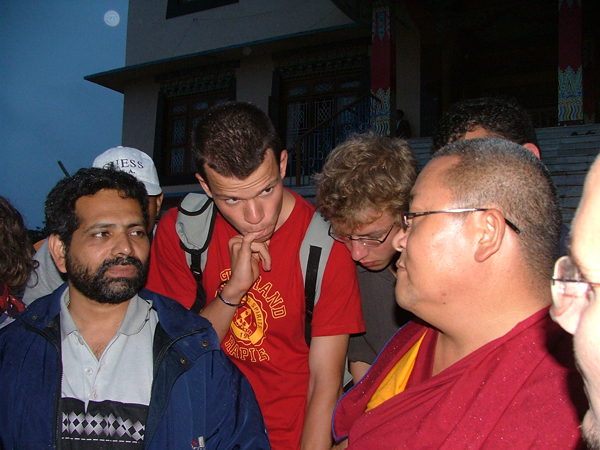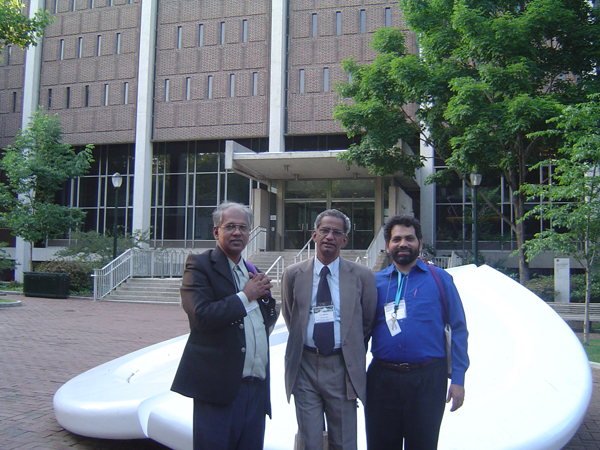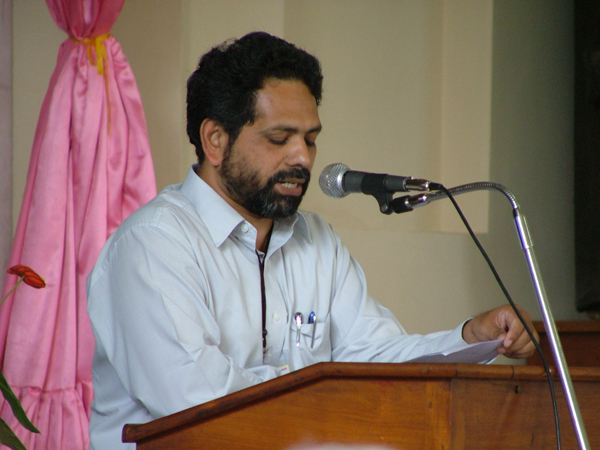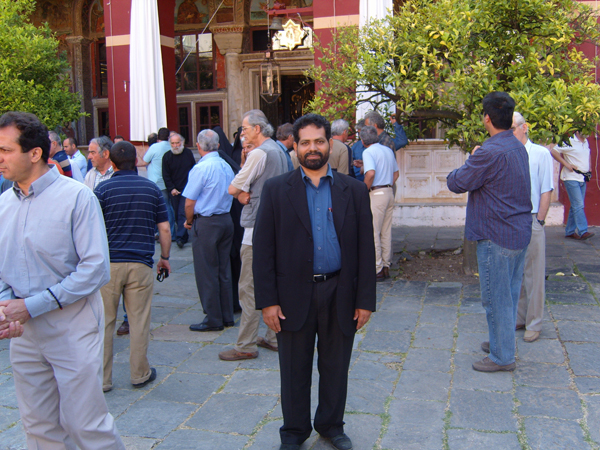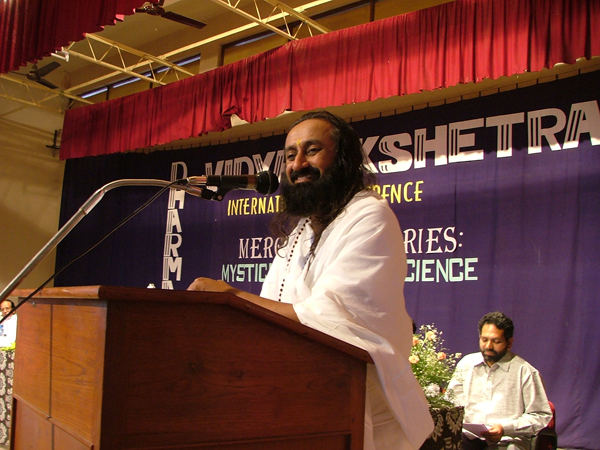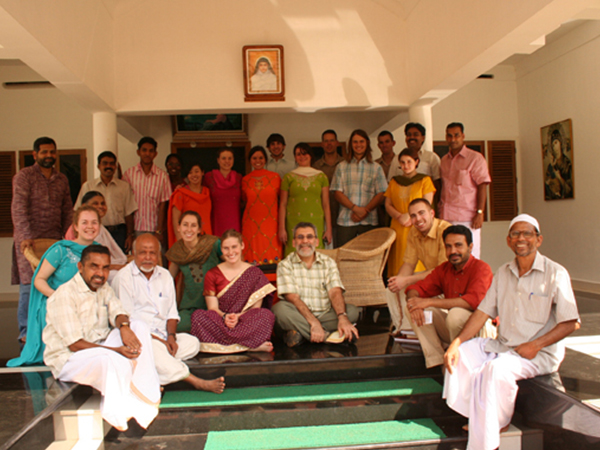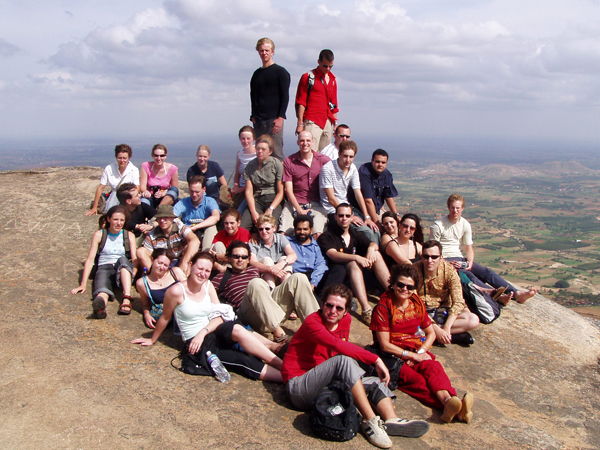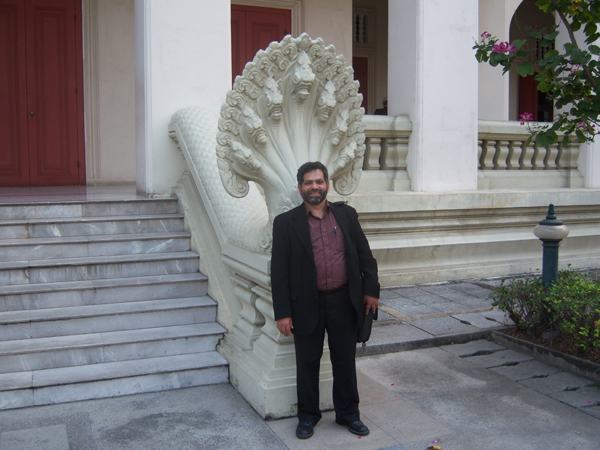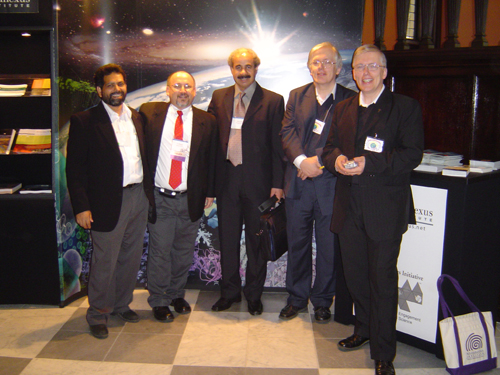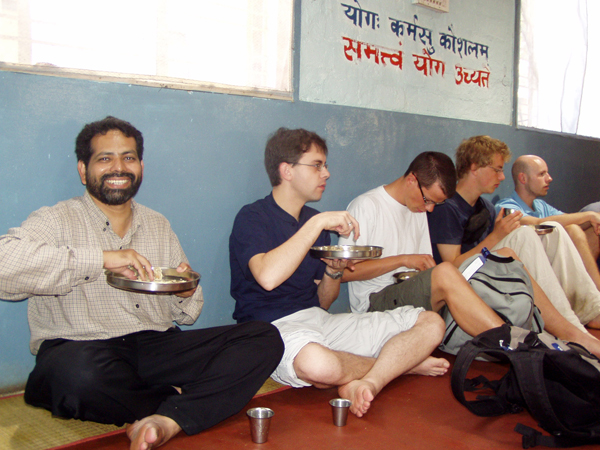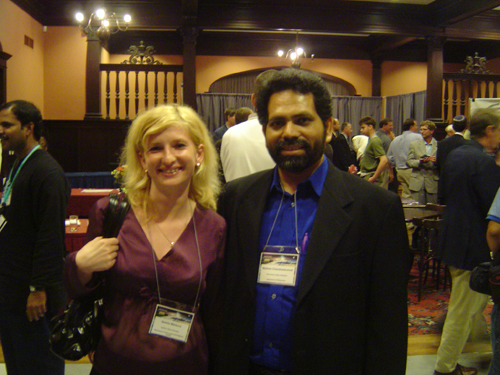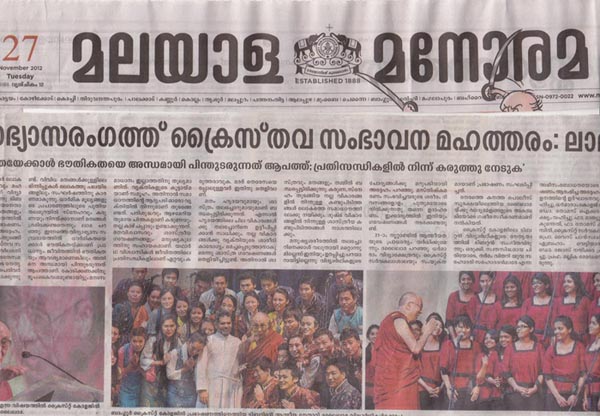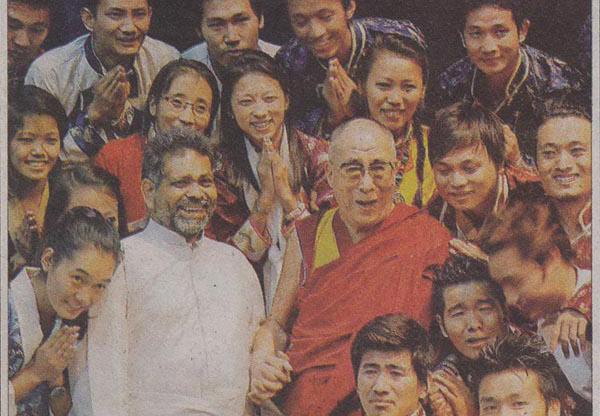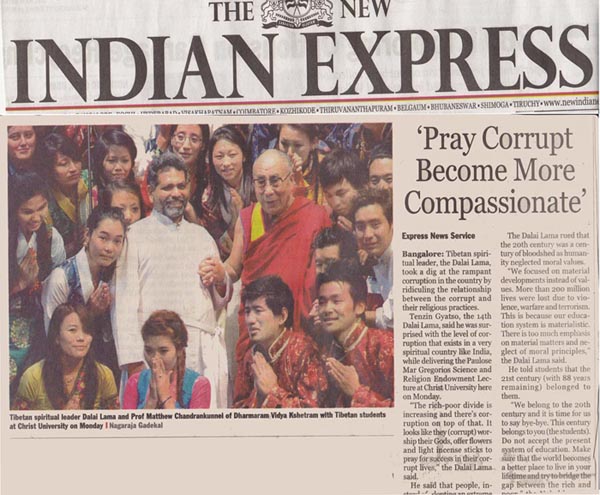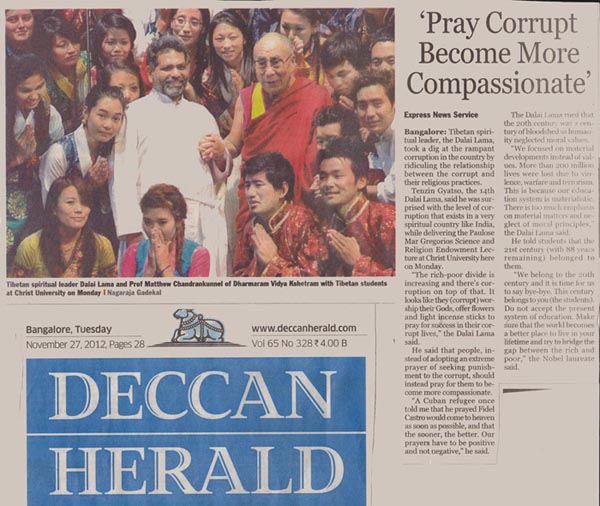An Eschatology from Cosmology
Eschatology is a theological science that deals with the end of a human person as an individual and with the possible end of the society as a whole from a religious point of view. The end of the society as a whole is discussed of Apocalyptic Eschatology in terms of the cataclysmic end of the cosmos, that is to say, in terms of the collision and collapse of planets and stars accompanied by the curious inter-play of thunder, darkness and lightning. So, in a way, the end of the universe and the end of the human society would happen simultaneously or, more precisely, the end of the cosmos and the totality of creation, would occur in an inextricably interrelated manner.
Classical Eschatology
This paves the way for a possibility of science and eschatology meeting together, especially when we look into the future of an individual person, the collective society and the end of the totality of matter as such. Science does not concern itself with the unique significance of the human persona s it regards the human person as a mere speck of matter having no specific influence on the immense matter-space-time. Continuum of the universe. Thus a holistic understanding would require a reflection on the end of the universe from these two perspectives, namely, the religious and the scientific. In the first part I shall explain the religious point of view and argue that this classical eschatology is inadequate to represent the holistic, dynamic, co-existent human experience of today. This will be followed by an inquiry into the possibility of developing a holistic and dynamic eschatology with the aid of contemporary cosmology, which may replace the static and outdated eschatology. Eschatology is a term coned by theologians, in the early nineteenth century, from the Greek work eschatos which means either the last of final, and, as such, it was employed to articulate the theological speculation on the Christian beliefs concerning death, and after-life realities such, judgment, resurrection, (and after-life). It has two components: the micro-eschatology and the macro-eschatology. The former deals with the individual end of a human person while the latter concerns itself with the end of humanity as a whole, thereby striving to give it a social dimension of eschatology.
In the early stages of (Judaism and) Christianity eschatological beliefs had, indeed played an important role in shaping the spiritual and moral thinking of its followers. Religious persecution and social suffering made them think of an imminent end of the individual and the society which was to take place at the Second Coming of the Lord, generally spoken of as Marantha (Aramaic) or Parousia (Greek). This course occasioned a later crisis in theology owing to the non-occurrence of this long expected catastrophic and cataclysmic end. This has caused eschatology to develop into two widely separate branches: apocalyptic and prophetic. While the former envisaged an immediate occurrence of the cataclysmic end, the latter thought of a gradual transformation of the sinful and unjust society into a virtuous and just one. Prophets were continuously admonishing the Jewish society to return to its old roots of social equality and fraternity, and hence the name prophetic eschatology. Let us have an over view of he mystery of the human end, of the individuals and the society as a whole.
The fundamental problems of human existence have been one of t major concerns for all religions. Eschatology is a mythical mode of understanding the complete realization of salvation as a future event or series of events that are linked to the present. For this reason, in Judaism and Christianity, there has existed a tension between the present and the future. The present can always serve the role of staging the inauguration of the eschatological drama and the future can always be drawn into the present through ritual anticipation. The emphasis on the immediacy of the end has, however, fluctuated, depending on the social, economic and political conditions of the Jewish community. During adverse periods the eschatology had played an important role in the social and religious dynamics of the early Judaism and Christianity.
A transformed Society
The ancient Jewish tradition focused on a transformed society living in an ideal environment. Hence its eschatological concerns were of materialistic and temporal nature. The Israelite eschatology was based on beraka-blessing- that consisted exclusively of material benefits signified by an abundance of food, crops, numerous herds of animals, long and healthy life, many healthy and intelligent children, victory over adversaries and the permanent possession of land whose center was at Jerusalem. Thus the material prosperity of the individual and the society was denoted as the external sign and symbol of God's blessing. A prosperous and materialistic future in this life itself was foretold by the prophets. Unity between nations, peace among people and a harmony between nature and humans were the trademarks of the prophetic eschatology. Later on, prophets began to predict a 'day of the Lord', which would be accompanied by a cosmic upheaval and destruction ending up in the renewal of the life of the Israelites where-by they would have to return to the ways of Yahweh. Thus there would be a new world, a new creation
- "For behold, I create new heavens and a new earth, I will rejoice in Jerusalem and be glad in my people; no more shall be heard in it the sound of weeping and the cry of distress" (Isa 65:19).
The eschatology of the prophets is thus this-worldly-(oriented) with little reference to the next life. Yahweh intervenes in the life of the individual and the society to bring the latter back to its original glory and power. However, in the prophetic eschatology more importance was given to the society than to the individual.
Apocalyptism
This worldly orientation of eschatology was given a twist by the second century BC. What is distinctive of the period, was the judgement of the dead and their entry into an everlasting kingdom which was very different from the prophetic eschatology concepts. This apocalyptic eschatology was the result of an interaction of Judaism with the Cannanite and Mesopotomian religions, as Judaism has by then been exposed to a wide range of influences in the post-exilic era. The earliest Jewish apocalyptic literature is that of Enoch and Daniel, which exhibit strong resemblance to the Mesopotomian myths. Enoch was moulded on the Mesopotomian sage Emmeduranki, who was able to interpret the movements of the heavenly bodies and dreams. Daniel whose book was written in the settings of Babylonian exile, was a sage who too was capable of interpreting dreams. The word apocalypse means a special kind of revelation given in a symbolic and mythic language, which needs interpretation. During the Maccabean crisis Jews were persecuted, their laws were suppressed and many were executed for practicing their religion, by Antiochus IV Epiphanes. In this context the author of the book of Daniel raises the question of reward for the righteous, there-by affirming the fact of a life beyond the earthly existnce for the first time in Judaism.
- And many of those who sleep in the dust of the earth shall awake, some shall live forever, others shall be an everlasting horror and disgrace. And those who are wise shall shine like the brightness of the firmament; and those who lead the many to justice shall be like the stars forever. (Dan 12: 2-3)
With an explicit hope of some form of existence beyond life, this new form of eschatology, which emerged in Judaism, began to emphasize 'the day of the Lore', the victory of Yahweh over evil forces. By the time of Jesus there was already a strong trend of faith and hope in a form of life after death. These expectations prompted the Jewish people of his time to regard the arrival of the Lord as a time that would initiate an era of peace and justice, restore the fortunes of Israel and bring about a new relationship between the people and nature.
The Reign of God: A tension between the present and the FutureThe above expectation and eschatological hope do make up the background of Jesus' ministry and mission, the overarching horizon of which was the announcement of the arrival of the kingdom of God.
- Now after John was arrested, Jesus came into Galilie, preaching the gospel of God, and saying 'the time is fulfilled, and the kingdom of God is at hand, repent and believe in the Gospel (Mk 1:14; Lk 4:43)
The parables and the miracles of Jesus were to signify the ushering in the kingdom of God. On the one hand, the reign of God is 'at hand' (Mk 1:14-15) and 'in the midst of you' (Lk 17:21). It was denoted by the signs of healing, exorcisms and the preaching of good news (Mt 11 4-5; Lk 4: 18-19). On the other hand, the reign of God is catapulted to an infinity time, not realizable in this lifetime. The strain of this non-reliability expressed in the prayer 'Our Father' (Lk 12: 2-4). Jesus' preaching upheld a tension between the present and the future, between the prophetic and apocalyptic eschatology, between the visible and the invisible components of the reign of God. Thus the immanence (nearness) and the transcendence (distance) of God's reign were emphasized by Jesus. Jesus death on the cross was described by Mathew (Mt 27:51-53) and Mark (Mk 15:3-39) as an embodiment of the immanent eschatology. After Jesus' resurrection the disciples experienced a new presence of Jesus in the form of an internal peace, inner strength, and the out-pouting of the Spirit, etc. In this respect the Christian eschatology can be said to be inextricably interwoven with Christology. Paul emphasized the christological character of eschatology by describing Christ as the "fullness of time" (Gal 4:4; Eph 1:10) so much so that the believer is a new creation (2 Cor 5:17). Here we find the tension between the already and not yet aspects of the arrival of the kingdom of God, a concept parallel to that of the prophetic an apocalyptic eschatology. The speculation on the second coming of Christ and the consequent final judgment and the reign of God which would endure continuously for a millennium was also an important factor contributing towards the deepening of the tension which was already present in the early Church.
Patristic Period
In the Patristic period the concepts of Millenariarism and Apokatastasis were prevalent in the eschatological thinking. Milleniarism sprang from the notion of the second coming of Christ and the continuation of His reign for a millennium. The early fathers highlighted this concept though there are not many takers for it today. For instance, the Eastern fathers such as, Gregory of Nazianzus and of Nyssa propagated the concept of restoration of everything I Christ. This is known as Apokatastasis. According to them, even hell would be dismantled and everything would be finally integrated in Christ. Although this concept was condemned by the Edict of Justinian (A.D. 543) and the Council of Constantinople (A.D. 553) still it exercises a fascination among theologians.
Development of DualismIn the middle ages there took plae an imaginative, materialistic and simplified development of eschatology that had economical effects and caused a tumultuous revolt in the Church. The unified vision of the present and the future of the early Church was further differentiated along with the cncepts of body and soul and of the resurrection of the dead-individual as well as the dead- community. In the medieval period the immortality of the individual soul was highly emphasized which led t the development of an individual eschatology even neglecting its social dimension. During the twelfth century, purgatory was given a separate place between heaven and hell which came to be deeply rooted in the western mind through the successful literary works such as Divine Comedy of Dante and the Paradise Lost of Milton. A picturesque presentation of the hell, purgatory and paradise in terms of animal like demons, everlasting fire, groaning souls depicted the alienation of the soul from God. Along with this picturesque conceptualization of eschatology there occurred the elaborate distribution of indulgences that ultimately lead to Reformation and Counter Reformation.
Due to the successful rise of Classical physics, a deterministic, mechanistic, dualistic and all controllable view of life filtered into the Western culture, which was to a certain that souls who were to be saved were already determined and rest would have to be perished for eternity. Along with this deterministic and all dominating attitude towards life an nature there developed an exploitative tendency that lead to the rape of the mother earth and women under the guise of controlling history and the domination of nature. A secularized form of eschatology based on domination and progress termed as naturalistic teleology came into prominence. The caring, affectionate, eschatological relative presence of God affectionate, eschatological creative presence of God was negated from the sphere of nature and humanity.
In the twentieth century, the scientific developments had shaken these traditional belief systems such as domination, determination, exploitation etc., and people seemed not at all concerned about the future. Competition and success became the new driving force for life. The sophist values of ancient Greece, success, money, power, authority, force that are available at the present are given more importance in life that led to the forgetfulness of an eschatological dimension of life. People sought for new opportunities and the availability of an infinite variety of consumer products eclipsed the search for the transcendental and the eschatological dimension of life. Unlimited progress, material pleasure and the immersion in the momentariness of life led the contemporary human person to the forgetfulness of the definiteness of death and the ultimate meaning of life and cut her/his umbilical relationship with the source of creation.
A New Eschatological FrameworkJurgen Moltmann pioneered a rediscovery of the eschatological dimension of life for the contemporary human person in the seventies and in the eighties through his books The Theology of Hope, The future of Creation etc. Moltmann sees the future as something radically new and different from the present. He describes God as a God of promises who intervenes in history from above. For him future and past have bearings on the present. "Present and future, experience and hope, stand in contradiction to each other in Christian eschatology" (The Theology of Hope, p. 18, 143). Thus the future belongs to the active and creative love and the compassionate and merciful grace of God. Moltmann is able to discover newness, transformation and unexpectedness in the active, creative and compassionate, mercy of God.
On the other hand, Karl Rahner described the importance of experiencing the present through the gift of the spirit that was poured out into the world through the death and resurrection of Jesus and Jesus' interpenetration into the world through ascension. Jesus danced into the space-time, into the universe bringing the whole of the universe, not only the nature and humanityinto a close togetherness but also the distant eschatological future and the immediate present. Thus the Christ-Event became a continuum of Jesus' death, resurrection and ascension, guaranteeing the graceful and compassionate presence of God in the creation. This is the solid foundation on which we can hope for a consummation in the distant future. God's loving presence, creative intervention and compassionate-dynamic guidance, acting from the very historical beginning of time authenticates the transcendental ending of time. Thus the eschatologies of Rahner and Moltmann are complementary since the anamnesis of the active past guarantees the redemptive intervention of God in the al consummating distant future. However, these two approaches have to be refined by incorporating the contemporary human experience and the contemporary epistemology of science.
One of the basic problems in reinterpreting the eschatological dimension is that the underlying social and cultural bulwark of the present day eschatology is still caught up in the medieval categories. The conceptual foundation, the active and organic experience of contemporary human person are in direct conflict with the medieval or classic representation of the eschatological statements. The mode of signification is no longer in touch with the reality signified. The dualism between body an mind, matter an spirit, heaven an earth, rationality an intuition, this life an next life do not translate the contemporary experience of existence, society and the world. As Rahner had already prophetically proclaimed, the new cosmology, ecology and anthropology had to be seriously undertaken in our theologizing. (T.I. Vol. 4, p. 324) Vatican II had also acknolwdged the same by emphasizing the radical change that had occurred in human experience and the changing worldview. (G.S. 5) The static, authoritative an dualistic worldview has to be overthrown and is to be replaced by a dynamic and holistic epistemology of the sciences. Any new framework of eschatology has to be capable of mediating between the eschatological statements and the holistic, epistemology of the sciences.
One of the basic problems in reinterpreting the eschatological dimension is that the underlying social and cultural bulwark of the present day eschatology is still caught up in the medieval categories. The conceptual foundation, the active and organic experiences of contemporary human person are in direct conflict with the medieval or classic representation of the eschatological statements. The mode of signification is no longer in touch with the reality signified. The dualism between body and mind, matter and spirit, heaven and earth, rationality and intuition, this life and next life do not translate the contemporary experience of existence, society and the world. As Rahner had already prophetically proclaimed, the new cosmology, ecology and anthropology had to be seriously undertaken in our theologizing. (T.I. Vol. 4, p. 324) Vatican II had also acknowledged the same by emphasizing the radical change that had occurred in human experience and the changing worldview. (G.S. 5) The static, authoritative and dualistic worldview has to be overthrown and is to be replaced by a dynamic and holistic epistemology of the sciences. Any new framework of eschatology has to be capable of mediation between the eschatological statements and the holistic, coexistent and dynamic world-experience. This emerging vision of interconnectedness, interdependence and holism raises humanity and nature into a continuum of Gelasenheit. In this trans-cosmic unity, the past, the present and the future are not at all separated: but fused into the creative activity of God that will transform the whole of creation into a trans-cosmic singularity in the fullness of time. Such a framework is attempted below from the new developments in cosmology.
New Epistemology of Science
Theory of Relativity and Quantum Mechanics conceptually revolutionized our thinking patterns and brought already a new way of looking at the cosmos. In the quantum level, the micro particles are behaving in an inextricably interwoven manner, even violation the principles of the theory of relativity. Such an experience is technically known as non-separable in space-time. Time and space cannot separate an entangled, once interconnected absorbs all matter, the whole of creation an transform them into the divine. Thus, the fragmentation between matter-spirit, creation- creator, past-present-future can be resolved. Everything submerges into this Trans-cosmic singularity, oneness, a togetherness that transcends our dualistic conceptual thinking pervades the nature and the cosmos.
The advantages of this new eschatology are the following. First of all we transcend the duslistic thinking patterns of classic period. Secondly we can get rid of the metaphorical representation of the hell, purgatory and heaven and replace them in terms of this Trans-cosmic singularity which is more appealing to contemporary taste and rationality. It presents the alienation of the soul as a deprivation from the Trans-cosmic singularity. Then we shall be thinking just in the same wavelength of the patristic apokatastasis, unification of everything into the Divine Totality. Thirdly, we shall be incorporating the dynamic, holistic, co-existent new thinking of the contemporary world-experience. Moreover, its basis is biblical and Christological. The interconnectedness and the oneness of the Trinity are emphasized in the pastoral prayer of Jesus in St. John's Gospel. Also Paul's letter to the Romans, chapter eight, describes the groaning of the whole creation for the ultimate liberation. It is a groaning of all creation to collapse into the Trans-cosmic singularity. Creation returns to the creator, i.e., merges with the Trans Divine Totality. Christ is at the center of this new eschatology. Christ is the force that attracts the individual and the community into a total transformation and trans-integration of all reality. This trans-cosmization transcends all the bindings of materiality and sublimates to the Gelasenheit of the Ultimate. A Gelasenheit of openness, interconnectedness and interdependence that incorporates the contemporary world experience that is thoroughly Christological. It incorporates the Rhner's vision of the creative presence and love of God present already in the world as well as the Moltmann's concept of the consummation of everything in future. The past, present and future are inextricably intertwined in this new mode of eschatological expression. This dynamic, active, holistic and co-existent eschatology has to replace the classical, deterministic, mechanistic, manipulative and fragmentary eschatology.
References.
The New Dictionary of Theology. Edited by Joseph A. Komonchak, Mary Collins and Dermot A. Lane, Theological Publications of India, Bangalore, 1994.
The Anchor Bible Dictionary. Vol 1 & 2. Edited by David Noel Freedman, Doubleday, New York, 1992.
Heinz R. Pagels, Perfect Symmetry, Bantam Books, Toronto, 1986.
Gelasenheit is a German word used by Heideggar meaning an ultimate openness devoid of all bondage.
In Search of a Contemplative Science
Read moreLectures, seminars, talks, discussions, retreats could be conducted on the following topics.
Definition of Religion and its methodology.
God as the ultimate principle of explanation based on experience. Christianity – Yahweh Experience and Liberation of the Old Testament, Jesus Event interpreted in terms of Greek philosophical Categories of Plato and Aristotle; Pre-Vedic, Vedic and Upanishedic God experience, Theistic and Non-Theistic religions such as Buddhism and Jainism, New Age and New Religious Movements.
Definition of Science in terms of Methodology and Domain.Observation, Experiment, Hypothesis, Verification/falsification, Law Statement, theory as a means to discover the cause-effect relationship of phenomena. Inductive and deductive processes. The chain of Being – matter, life, mind, soul and God – scientific methodology can only be applied till the domain of animal life. Stretching the domain and methodology can create dogmatism from the part of Religion and scientism from the part of Science making category mistakes. Science as objectivity; Main philosophers of science, Logical Positivism – Ernst Mach, Karl Popper, Thomas Kuhn, Imre Lakatos, Paul Feyrabend.
Development of Religion and Science.
Primitive vision, Ancient Babylonian, Greek, Egyptian and Chinese vision as astrology – horoscope, Zodiac signs, Vasthu – pseudo science. Aristotelian Cosmology as movement from physics to metaphysics, Aristotelian Ptolemaic vision – Geometrization of nature, Aquinas theologizing Aristotelian metaphysics, identification of Aristotelian common sense science with Biblical cosmology, the best method of theolagization as a process from physics, metaphysics to theology.
Initial Conflict with Science and Religion
Problem of the falling of Easter into winter and the discussions on the Calendar reforms inducing Copernicus to revolutionize the Aristotelian cosmology, Galileo's propagation of Copernicanism, Kepler's three laws and the condemnation and rehabilitation of Galileo. Conflict between intellectual freedom, Biblical literalism and dogmatism.
Newtonian Classical mechanics as an approximation of the theory of relativity and Quantum Mechanics – force, absolute space and time, universe as a machine, philosophy of mechanism. Introduction of field by Faraday and Maxwell and the conflict between these two views leading Einstein to review the space-time-matter into a continuum through the theory of relativity; gravity as the property of space-time; a philosophy of determinism. Quantum mechanics describing the atomic and subatomic world in terms of atoms, neutrons, protons and electrons; at present as quarks and the four forces; the complimentarity, probability and uncertainty principles proposing a philosophy of indeterminism. Conflict between Newtonian, relativistic physics and quantum mechanics as determinism and indeterminism.
The New Expanding Cosmology
Big Bang – Lematire, Gamow, Friedmann, Hubble and the confirmation of the Big Bang by the discovery of the back ground radiation, evolution of stars – Red giant, white dwarf, supernova, neutron star, black hole, quasars, pulsars, galaxies, galactic clusters; future of the universe, expanding, steady state, big crunch; reading of the Biblical account of creation and the study of cosmology as a meditation on the beauty and splendor of the immensity of the universe leading us to the Creator.
The conflict between Biblical origin of life and the scientific account of evolution.
Darwin's evolutionary explanation of life, from a unicellular organism to the complex human being; Gregor Mendel and genetics, basic building blocks of life as DNA, chromosomes, genes, amino acids and protein synthesis – a marvel of God's mystery. Biblical account of creation of human beings and the scientific account of the origin of life is it in conflict? Conflict between creationism and intelligent design and evolutionary processes!
Genetic Engineering and ethical problems
Biotechnology manipulating life – to and fro gene transfer among plant to animal and to human, gene therapy, stem cell research, cloning, surrogate mother hood, euthanasia, abortion, ovum and sperm banks, invitro fertilization, harvesting and transplanting body parts, bio-engineering; the ethical dimensions of all these issues leading us to think whether biotechnology as hope or horror?
Ecology – Human beings as stewards of God's creation
Environmental pollution of air, water, earth, atmosphere, space; deforestization, exploitation of the resources of earth; chemical, nuclear IT waste management, development of non-conventional methods of energy;
Quantum Holism to Cosmic Holism: Resolution of science – religion conflicts
Four relationship between science and religion; conflict, indifference, co-operation and integration; faith and reason flow from the same source – God; Teilhard Chardin's model of integrating science and religion; Templeton's attempts in bringing science and religion closer; the necessity of the integration of science and religion to solve the problems of humanity; reason and faith as understanding the book of nature and the book of scriptures of different religions; science and religion as wonder, awe and mystery and both a spiritual journey.
Books for References
Chandrankunnel, Mathew; Philosophy of Quantum mechanics, From Quantum Holism to Cosmic Holism, Global Vision, New Delhi, 2008.
Chandrankunnel Mathew, Science and Religion: Confluence of Two Oceans, an Introduction to Science and Religion and Philosophy of Science, Forth coming.
In Service of the Truth: The Physics, Philosophy and Religion of Galileo Galilei, Forth coming. Read more
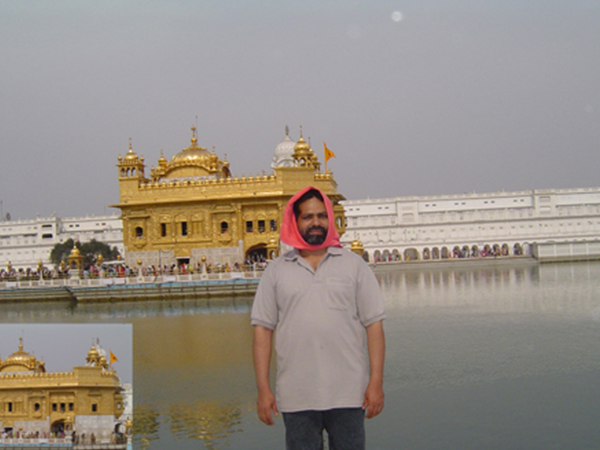
Hearty welcome to India, the land of timeless spiritual consciousness; the land of matrix of cultures; the land protected by the Himalayas; the abode of purity and religiosity and a land adorned by the numerous green valleys, flower bedecked mountain ranges and a land splashed by the rivers, seas and the ocean, God's own land, the garden of virtues, India.
My attempt and effort is to introduce you and to help you to conduct an in depth research, into the religious awareness and the spiritual consciousness of India as well understanding the dynamics of new religious movements.
From time immemorial, gazing at the myriad twinkling stars spread over the vast sky and the waves splashing over the shores endlessly, aroused, awe, wonder and curiosity in the human spirit. The snow clad mountains, the flower spread valleys, cascading rivers, endless greenery created an awareness of beauty and the sublime in the human mind as it stood meditatively in front of the immensity of the universe. The questions where do we come from? Where do we go into? What is the meaning of life? What is after life? These and other such meaningful Questions created awareness in humanity about the supreme power that is beyond the natural. In order to experience, reach out to the Supreme, the supernatural, the Divine, humanity envisioned rituals that gradually through thousands of years crystallized into doctrines, practices, and ultimately into the form of religion. India is the cradle of religions. It also embraced religions that crossed over the seas and established in India mutually benefiting to each other. Thus Hinduism in its myriad forms, Buddhism with its austerity and missionary zeal, Jainism with its spirit of self conquer, Sikhism arousing the spirit of the Master–Guru, Zorastrianism with its towers of silence, Christianity with its ideal of altruism, Islam with its mystical Sufi trends, Bahai with its spirit of universality, grew in the soil of India turning it into a sacred land. These rich experiences of living religiosity, I would like to share with you.
This is a journey in spirituality. It is also a rational, critical reflection on religiosity and rituals. For the past 15 years I am conducting intercultural and interreligious journeys, retreats, lectures, satsangs, participation in festivals to promote and foster bridges between cultures, nations, societies, religions so that peace and prosperity may prevail.
Read more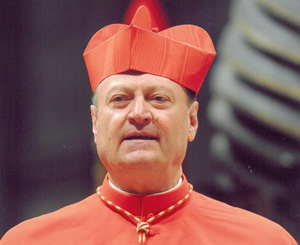
June 22, 1633 will be a date engraved as an epigraph in the History of Western Civilization, almost paralleling that day in 399 B.C. when the Philosopher Socrates was condemned to death in Athens. On that day, the Father of modern science, Galileo Galilei from Pisa, heard the sentence of the Tribunal of the Roman Inquisition, which condemned him and read the abjuration of his theories contrary to geocentricism. That act has become a yardstick which has been paraded through the centuries as a symbol of the abuse of power of theology over science: famous, in this regard, is the drama, Das Leben des Galilei, which the renowned German playwright Bertolt Brecht, dedicated specifically to "the life of Galileo" and his humiliation.
Undeniably, the forced abjuration of Galileo, a scientist and a believer, even though shrouded in its historical context and in the complexity of questions that were intertwined in that debate, still remains for the Church a sore wound. That is why, John Paul II sought to heal it, both in the confessions of sin given on the "Day of Forgiveness" during the Jubilee year of 2000, as well as, in setting up of the official Vatican Commission, previously in 1981, to throw light on the entire affair. Cardinal Paul Poupard, the President of the Pontifical Council for Culture, the Predecessor of the one who is writing these lines, was called to preside over this Commission. Historical research stretched over more than a decade till 1992 and concluded in a solemn act in the Sala Regia of the Vatican, in the presence of John Paul II himself, who delivered a discourse, to so to say, place the final seal on a "tragic incomprehension which today we all deplore" .
Already during the Second Vatican Council, there was no dearth of voices of Fathers who desired to promote a similar gesture and, even if these did not lead to a collective conclusion, in No. 36 of Gaudium et Spes, the Council condemned "certain habits of mind, which are sometimes found too among Christians, which do not sufficiently attend to the rightful independence of science" and the constitution in the footnote made an explicit reference to the biography dedicated to the Vita e opere di Galileo Galilei (1964) [Life and works of Galileo]by the historian Pio Paschini. Despite all this, there is no occasion, not even the minimal, of a debate between theology and science, that does not see the stirring of the bogeyman of the "Galileo Case", notwithstanding the radical diversity of the chronological, historical and cultural coordinates. For that very reason, we have positive results from all the studies that reproduce accurately the interplay between physics, philosophy and religion in the happenings linked to the Tuscan scientist who, by the way, always remained a great believer.
We therefore positively welcome the research work of Fr. Matthew Chandrankunnel, who has sought to work on the argument, passing through a balanced and documented synthesis, trying in fact to unravel scientific as well as theological knots, as is indicated by the subtitle of his opus: The Physics, Philosophy, and Religion of Galileo Galilei. The personality of the protagonist is in fact versatile: his scientific researches are certainly relevant, but even more perhaps is his intuition to define accurately the epistemological regulations for Biblical exegesis and theology, as also, his passion for the philosophical examination of being. Through a similar elucidation it is possible to overcome the risk of leaving open a permanent session of the tribunal of history: on the vestiges of errors of the past, in fact, it is necessary to assemble a new engagement and dialogue between science and faith.
It would be a dialogue that would make the scientist abandon the conceited self sufficiency and the peremptory exclusivity of his assertions as being the only "true" and established one. However, it would also be a dialogue that would lead the theologian to avoid the temptation of cordoning off areas of scientific research and to conclude results that only sustain his notions. The pages which will now follow will not only facilitate to clarify objectively a past event, which nonetheless is still alive, but also to overcome it and to go beyond, towards a different horizon in which science and faith, even though advancing on different paths, would listen to each other and would interact with each other respectfully. Because as Max Planck, the famous theoretician of "quantum", and Nobel Prize winner in 1918, wrote in his "Wege zur physikalischen Erkenntnis, Wissenschaftliche Selbstbiographie" "Science and religion are not at odds but they need each other to complete themselves in the mind of a man who thinks seriously."
Read moreHomily by Major Archbishop Mar George Alencherry during the Funeral Ceremony of Bishop Mar John Perumattam
One may think that all of us have come to say farewell to our beloved Bishop Mar John Perumattam MST. To tell the truth it is just the opposite. It is Bishop John who says farewell to us. It is he who says I am going to my Father, you fare well. He wishes that we do well in our lives and our mission. This would remind us also the last words of Blessed John Paul II to his confessor: Now let me go to my Father. We all know the words of St. Augustine: O God you have created me for you. And I am restless until I rest in you. Bishop Perumattam has found his rest in God.
In one of the last Synods he attended, during the evening break one day I asked Bishop Perumattam: How do you see the future of our mission in Ujjain? He said calling me by name, our duty is to make the presence Christ felt everywhere in the citadel of Hinduism. There will come a time, he said, perhaps our Hindu brethren may accept Christ without forgoing what is best in Hindu religious tradition. I was happy to share from his vision of the Mission, his understanding of evangelization in a society structured with the Sanadhana Dharma of Hinduism. He strongly believed that the gospel of Christ has a rightful place in the values of Sathyam and Dharma ever revered by our Hindu brethren and that the sacrifice of Christ gives an eternal perfection to the Karma Yoga of thousands of Rishis in India. We stand side by side with our Hindu brethren in worship and action with our places of prayers and venues of action for education and social welfare. Where the spoken word cannot directly communicate the message of Christ, it is mainly the deeds of the messenger that should make the Word Incarnate present and active in the human society. To the Jews who refused to believe in Jesus he said: "if I am not doing the works of myFather, then do not believe me. But if I do them, even though you do not believe me, believe the works, so that you may know and understand that the Father is in me and I am in the Father" (Jn 10, 37-38).
Bishop Perumattam was also a messenger who became the message. My dear brothers and sisters, this is the time of the Church when we , bishops, priests, and persons of consecrated life have to become the very mission of Christ. As the Holy Father says we are our mission. Our words and deeds, the very way of our being becomes our mission. At the practorioum before Pontius Pilate even the silence of Jesus was eloquent.
shop Perumattam was a trustworthy steward. He executed his mission with utmost care for men and matters. He had deep concern for his co-labourers in the Vineyard of Christ, the priests and the religious. He shared their joys and sorrows.
He was a man of deep faith. Beatifying Pope John Paul II, Pope Benedict XII said: John Paul, you are blessed because you believed in God. Come what may, it is faith in God that sustains our lives before God and men- a faith that works through love. He lived the mystery of Christ in the Holy Qurbana, the liturgy of the hours, in personal prayers, and a filial devotion to Mary, our beloved Mother.
As the faithful servant in the gospel, about whom we heard once again, he doubted the talents not only his own but also of those around him. In the reading from the Acts of the Apostles at the appointed time he entrusted his mission to the worthy hands of his successor Bishop Sebastian Vadakkel. Appolo sows, Paul waters, the Church grows and bears fruits. The Church is highly appreciative of the steady growth this diocese has attained all along the past almost 50 years.
The other day I was reading a note by Cardinal Joseph Parecattil who applauds the launching of MST by Bishop Sebastian Vayalil. MST is the child of Bishop Sebastian Vayalil's apostolic genius.
Bishop Perumattam as priest being right hand of Bishop Vayalil gave MST the canonical Structure and initial shape together with his collaborators. Cardinal Parecattil says that the MST has given a great impetus to the missionary drive of the SyroMalabar Church.
We know very well that the missionary expedition of the Church started from Central Kerala especially the area of the present diocese of Palai and the CMI congregation. The other congregations of men and women and the MST joined this mission ad gentes. Here I would like to express with joy the sentiments of gratitude to the MST on behalf of the Church.
Finally a word about the holiness that should characterize our lives. Dear friends, my co-workers with Christ, we have to be beacons of holiness in the present world that becomes more and more secular and Godless. Let he holiness of God, i.e., fullness of truth and love, through honesty, justice, truthfulness, loyalty, transparence, accountability, mercy, kindness, love for the poor, spirit of forgiveness, etc must shine in our lives. Let us be instruments of peace in the society. Let others see the goodness in us, which is simply participation in the goodness or holiness of God and say that Jesus is the Lord.
Read more
